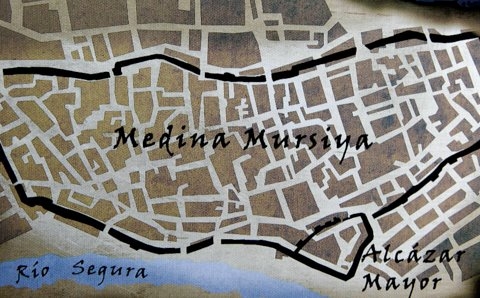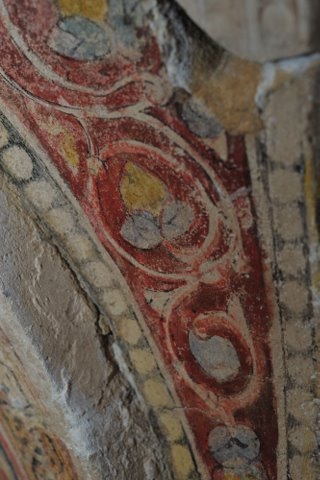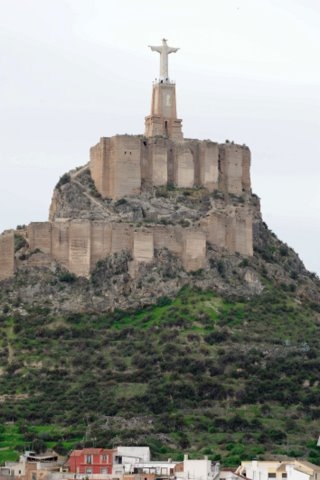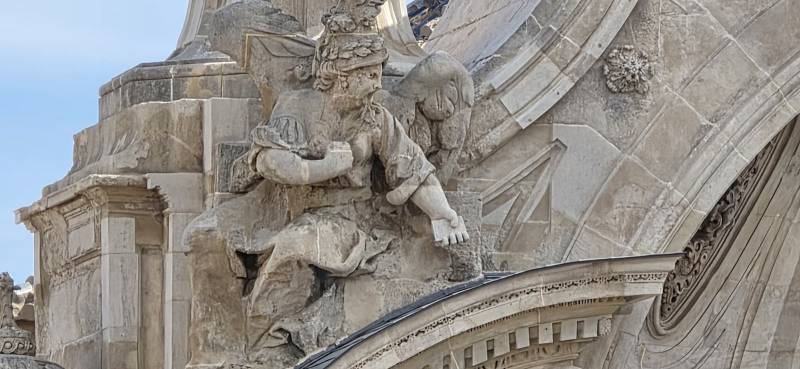

Guidelines for submitting articles to San Pedro del Pinatar Today
Hello, and thank you for choosing San Pedro del Pinatar.Today to publicise your organisation’s info or event.
San Pedro del Pinatar Today is a website set up by Murcia Today specifically for residents of the urbanisation in Southwest Murcia, providing news and information on what’s happening in the local area, which is the largest English-speaking expat area in the Region of Murcia.
When submitting text to be included on San Pedro del Pinatar Today, please abide by the following guidelines so we can upload your article as swiftly as possible:
Send an email to editor@spaintodayonline.com or contact@murciatoday.com
Attach the information in a Word Document or Google Doc
Include all relevant points, including:
Who is the organisation running the event?
Where is it happening?
When?
How much does it cost?
Is it necessary to book beforehand, or can people just show up on the day?
…but try not to exceed 300 words
Also attach a photo to illustrate your article, no more than 100kb

History of Murcia, Part 3
Part 3, The Moors and founding of Mursiya
The History of Murcia Capital is written in 6 parts. To access the other sections, click below:
Part 1, Prehistoric Murcia, Click Prehistoric Murcia
Part 2, Of Romans and Visigoths, Click Romans and Visigoths
Part 3,Moors and Mursiya, Click Mursiya is born
Part 4,Mediaeval Murcia, Click Mediaeval Murcia
Part 5,From 16th to 18th Century, Click Murcia 16th to 18th Century
Part 6, From the end of the 18th Century to the beginning of the 21st, 18th to 21st Centuries
The Foundation of Medina Mursiya
 Following the decline of the Romans and subsequent invasions by Vandals, Goths and visigoths, turbulence which lasted between the 4th and 8th centuries, the Iberian peninsula ( Spain) suffered from a lack of social order and political instability, before Moorish troops from Africa, under the orders of Tarik, entered through Gibraltar and began to conquer the Visigoth kingdom.
Following the decline of the Romans and subsequent invasions by Vandals, Goths and visigoths, turbulence which lasted between the 4th and 8th centuries, the Iberian peninsula ( Spain) suffered from a lack of social order and political instability, before Moorish troops from Africa, under the orders of Tarik, entered through Gibraltar and began to conquer the Visigoth kingdom.
At this point in time, what is now the Region of Murcia was governed by a Visigoth overlord Theudimer (known in Arabic as Tudmir), overlord of the Levante area.
In 713, troops led by Abd al-Aziz took on the conquest of the south-east, setting out from Granada across South Eastern Spain.
Knowing there was little point in resistance, Tudmir signed a pact with Abd al Aziz, by which the south-east, including Murcia, was surrendered to the Moors. This agreement is known to historians as the Pact of Theudimer or the Pact of Tudmir.
 This document is the oldest Moorish document which survives about the Region, and summarizes the conditions of the armistice between the two sides. It is considered to be the first constitution of the Kingdom of Murcia, and the first recognition of the Region as a political entity.
This document is the oldest Moorish document which survives about the Region, and summarizes the conditions of the armistice between the two sides. It is considered to be the first constitution of the Kingdom of Murcia, and the first recognition of the Region as a political entity.
The pact formalized the relationship between conquerors and conquered, their rights and duties, and the economic dues to be paid. It also established the sovereignty and judicial status of Theudimer.
The basis of the treatise is tolerance and good relations, and the most important towns of the south-east, such as Mula, Lorca, Alicante, Elche and Villena are specifically mentioned. Orihuela is recognized in the document as the capital of the area.
The name of Murcia is not mentioned, which reflects the fact that it was still relatively unimportant, and at that point was just a small urban nucleus. There had been settlements along the banks of the River Segura for centuries, but the population was still relatively small.
During Theudimer’s lifetime, the area of Tudmir was neither an independent principality nor an area directly governed by the Moors: rather it was an area under the leadership of a Visigoth chief known as a “wali” (governor). This governor was named by Damascus to oversee the possessions in Al-Andalus. The same situation prevailed with Theudimer’s successor, Athanagild, but after him the area became a dependency of Córdoba, losing its special status.
The city of Murcia founded by Abd al-Rahman II
 At the start of the 9th century, the city of Lorca became to all intents and purposes the capital of Tudmir, replacing Orihuela, which had lost most of its function as the administrative capital of the area.
At the start of the 9th century, the city of Lorca became to all intents and purposes the capital of Tudmir, replacing Orihuela, which had lost most of its function as the administrative capital of the area.
In the early part of the ninth century, Murcia was built, an interesting story being recounted that the foundation of the City is linked to a feud which broke out over a bunch of grapes.
This area was inhabited by two rival tribes, the Yemenies and the Midaries, who mutually loathed each other. This enmity dated back long before they had even arrived in this area, and although the dislike didnt boil over into anything more serious than resentful rivalry, there was constant tension in the area.
This all changed, however, due to the most trivial of incidents- an argument over a bunch of grapes.
 One day, a Yemeni went down to the waters edge of the Rio Segura to fill his drinking flask, and decided to help himself to some grapes he noticed growing nearby. Unfortunately , the owner of the grapes, a Midare, saw him just as he was about to cut the branch and ordered him to stop. He refused, popped a grape in his mouth, and the enraged and insulted owner attacked.
One day, a Yemeni went down to the waters edge of the Rio Segura to fill his drinking flask, and decided to help himself to some grapes he noticed growing nearby. Unfortunately , the owner of the grapes, a Midare, saw him just as he was about to cut the branch and ordered him to stop. He refused, popped a grape in his mouth, and the enraged and insulted owner attacked.
A big fight ensued, in which the Yemeni was killed.
His tribe were furious and launched a raid on their rivals, which turned into a war.
Troops from Cordoba were sent to quash the fighting and an uneasy peace agreed, but by the time theyd ridden back to Cordoba, the fighting had broken out again.
Back they came, and the same thing happenend again.
Fed-up with all the fighting, the emir, Abd al-Rahman II, decided to leave troops in the area permanently and on 25th July, 825, he established a new capital on the banks of the River Segura with the aim of bringing peace to the territory, furthering its development and strengthening his own authority.
He built a fortification on the location of a former Roman villa called Murtia, with the highest walls in the arab kingdom, a 15-metre-high wall, featuring 95 defensive towers and 9 gates.
Medina Mursiya was born.
The administrative foundation of Medina Mursiya gave the town a new personality, and established it as the new capital of Tudmir, which, according to the Moorish geographer al-Idrisi, included Murcia, Orihuela, Cartagena, Mula, Lorca and Chinchilla.
Parts of the walls can still be seen today, below the Iglesia of San Juan de Dios, and in the Muralla de Santa Eulalia interpretation centre.
Abd al-Rahman III
 The main aims of Abd al-Rahman II met with relative success and the city slowly began to prosper, not so much due to is being the administrative centre of the territory as because of its ideal position in the best area of the Segura valley.For the rest of the 9th century, Lorca continued to be clearly the most important city, and it was not until the 10th century that Murcia gained ascendency as the obvious political capital and economic hub of Tudmir.
The main aims of Abd al-Rahman II met with relative success and the city slowly began to prosper, not so much due to is being the administrative centre of the territory as because of its ideal position in the best area of the Segura valley.For the rest of the 9th century, Lorca continued to be clearly the most important city, and it was not until the 10th century that Murcia gained ascendency as the obvious political capital and economic hub of Tudmir.
In 929, Abd al-Rahman III was proclaimed Caliph of Córdoba, beginning one of the most splendid periods in the history of Al-Andalus. The following year he sent a Berber general to govern Tudmir, which was the beginning of a new order for the territory, an era which was characterized by social stability and economic prosperity. This had the eventual effect of establishing Murcia even further as capital, with more importance than the other towns in the area.
Murcian Splendour under the “Wolf King”
After the crisis and disappearance of the Caliphate of Córdoba in 1031, Tudmir was engulfed by political and social instability. During this period the first formation of the Kingdom of Murcia was initiated, the kingdom eventually incorporating what is now the province of Albacete and part of Almería.
 In 1147, Ibn Mardanis, the controversial “Wolf King”, came to power in Murcia and made the capital and the court into a political and cultural centre on a par with any of the big Islamic cities of the time.
In 1147, Ibn Mardanis, the controversial “Wolf King”, came to power in Murcia and made the capital and the court into a political and cultural centre on a par with any of the big Islamic cities of the time.
He built the spectacular series of fortifications at Monteagudo, the Castillo de Monteagudo, the Castillejo and Larache. The castle of Monteagudo is the seat upon which the emblematic figure of the Christ of Monteagudo is built, although it´s not immediately apparant from afar that this is inside the ruins of this massive Moorish fortification.
After 25 of glorious reign, Ibn Mardanis was defeated by the Almohads, and he died in Murcia in 1172.
Ibn Hud and the Catholic reconquist.
 One of the last important episodes in Moorish Murcia was at the end of the Almohad reign in Al-Andalus. After the victory of Alfonso VIII of Castile at Navas de Tolosa in 1212, in a climate of instability and danger in frontier country, Ibn Hud began his adventurous attempt to create a new independent kingdom.
One of the last important episodes in Moorish Murcia was at the end of the Almohad reign in Al-Andalus. After the victory of Alfonso VIII of Castile at Navas de Tolosa in 1212, in a climate of instability and danger in frontier country, Ibn Hud began his adventurous attempt to create a new independent kingdom.
In 1228 he entered Murcia and proclaimed himself Emir, and went on to extend his power throughout the south-east of the peninsula. However, the Christian advance slowly weakened the territories of Ibn Hud, and in 1243 the territory of Murcia submitted to the protection of King Fernando III of Castile, and his son, Prince Alfonso, who went on to become one of the most important figures in Murcian history, Alfonso X, El Sabio. ( the wise.)
Legend has it that Ibn Hud was murdered by one of his own governors in Almería.
The Catholic Reconquist had begun.




















